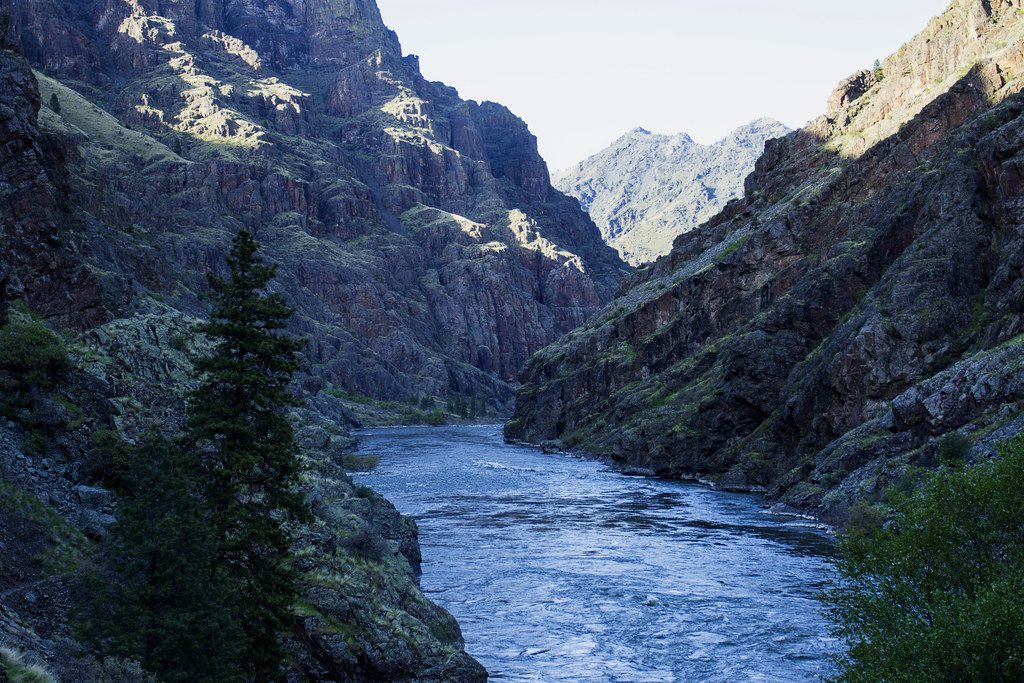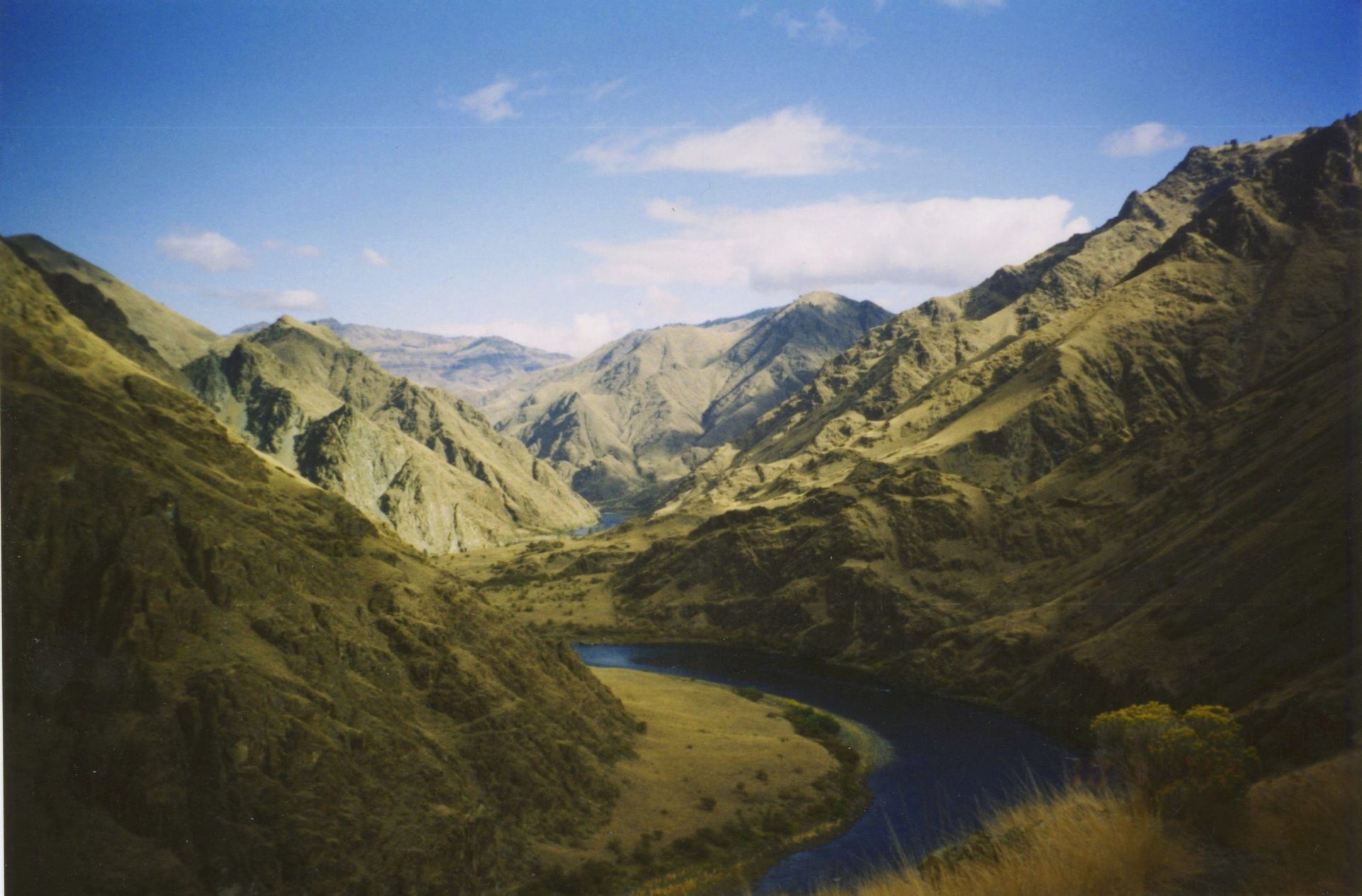Hells Canyon is a ten-mile-wide (16 km) canyon in the western United States, located along the border of eastern Oregon, a small section of eastern Washington and western Idaho. It is part of the Hells Canyon National Recreation Area which is also located in part of the Wallowa-Whitman National Forest. Notably, Hells Canyon runs deeper than the better-known Grand Canyon in Arizona.
The canyon was carved by the waters of the Snake River, which flows more than one mile (1.6 km) below the canyon’s west rim on the Oregon side and 7,400 feet (2,300 m) below the peaks of Idaho’s Seven Devils Mountains range to the east. This area includes 214,000 acres of wilderness. Most of the area is inaccessible by road.

The geologic history of the rocks of Hells Canyon began 300 million years ago with an arc of volcanoes that emerged from the waters of the Pacific Ocean. Over millions of years, the volcanoes subsided and limestone built upon the underwater platforms. The basins between them were filled with sedimentary rock. Between 130 and 17 million years ago, the ocean plate carrying the volcanoes collided with and became part of the North American continent. A period of volcanic activity followed, and much of the area was covered with floods of basalt lava, which smoothed the topography into a high plateau.
The Snake River began carving Hells Canyon out of the plateau about 6 million years ago. Significant canyon-shaping events occurred as recently as 15,000 years ago during a massive outburst flood from Glacial Lake Bonneville in Utah. The canyon contains dense forests, scenic overlooks and mountain peaks. At the bottom of the canyon, the area is a dry, desert environment.
According to en.wikipedia.org; britannica.com. Source of photo: internet








